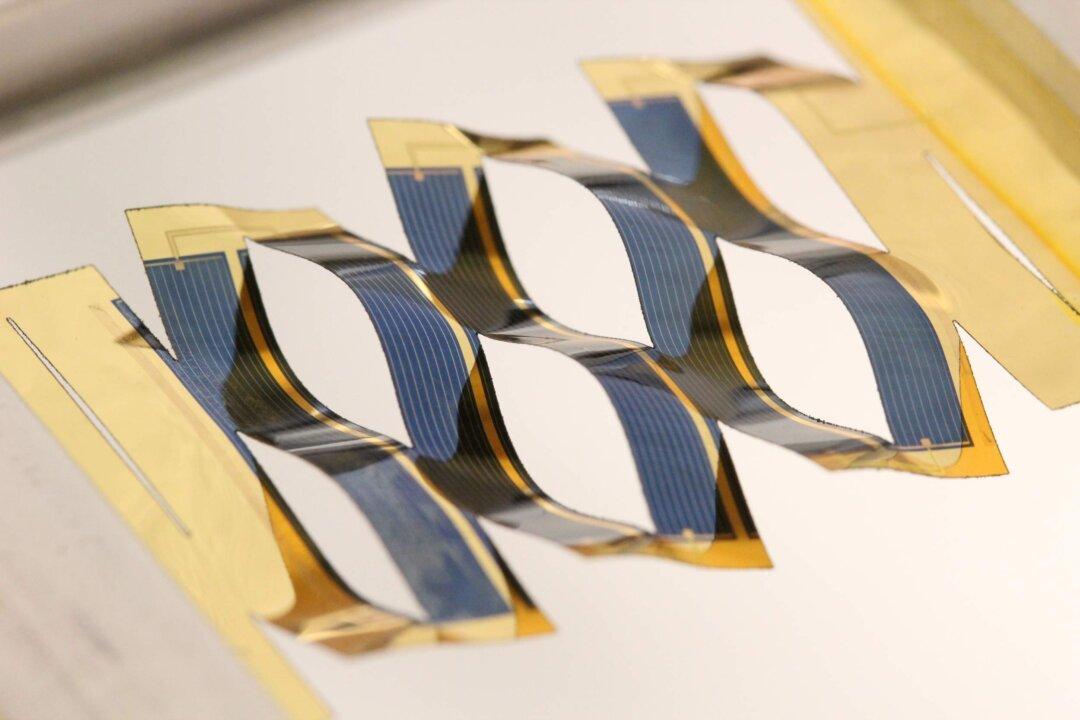Solar cells capture up to 40 percent more energy when they can track the sun across the sky, but conventional, motorized trackers are too heavy and bulky for pitched rooftops and vehicle surfaces.
Researchers have come up with an answer by borrowing from kirigami, the ancient Japanese art of paper cutting, to develop solar cells that can have it both ways.
“The design takes what a large tracking solar panel does and condenses it into something that is essentially flat,” says Aaron Lamoureux, a doctoral student in materials science and engineering at the University of Michigan.
Residential rooftops make up about 85 percent of solar panel installations in the United States, according to a report from the Department of Energy, but would need significant reinforcing to support the weight of conventional sun-tracking systems.
A team of engineers and an artist developed an array of small solar cells that can tilt within a larger panel, keeping their surfaces more perpendicular to the sun’s rays. Their findings are published in the journal Nature Communications.
“The beauty of our design is, from the standpoint of the person who’s putting this panel up, nothing would really change,” says Max Shtein, associate professor of materials science and engineering. “But inside, it would be doing something remarkable on a tiny scale: the solar cell would split into tiny segments that would follow the position of the sun in unison.”
Panels the Sun Can ‘See’
Solar cell researchers think of tracking in terms of how much of a solar panel the sun can “see.” When the panel is at an angle, it looks smaller. By designing an array that tilts and spreads apart when the sun’s rays are coming in at lower angles, they raise the effective area that is soaking up sunlight.

